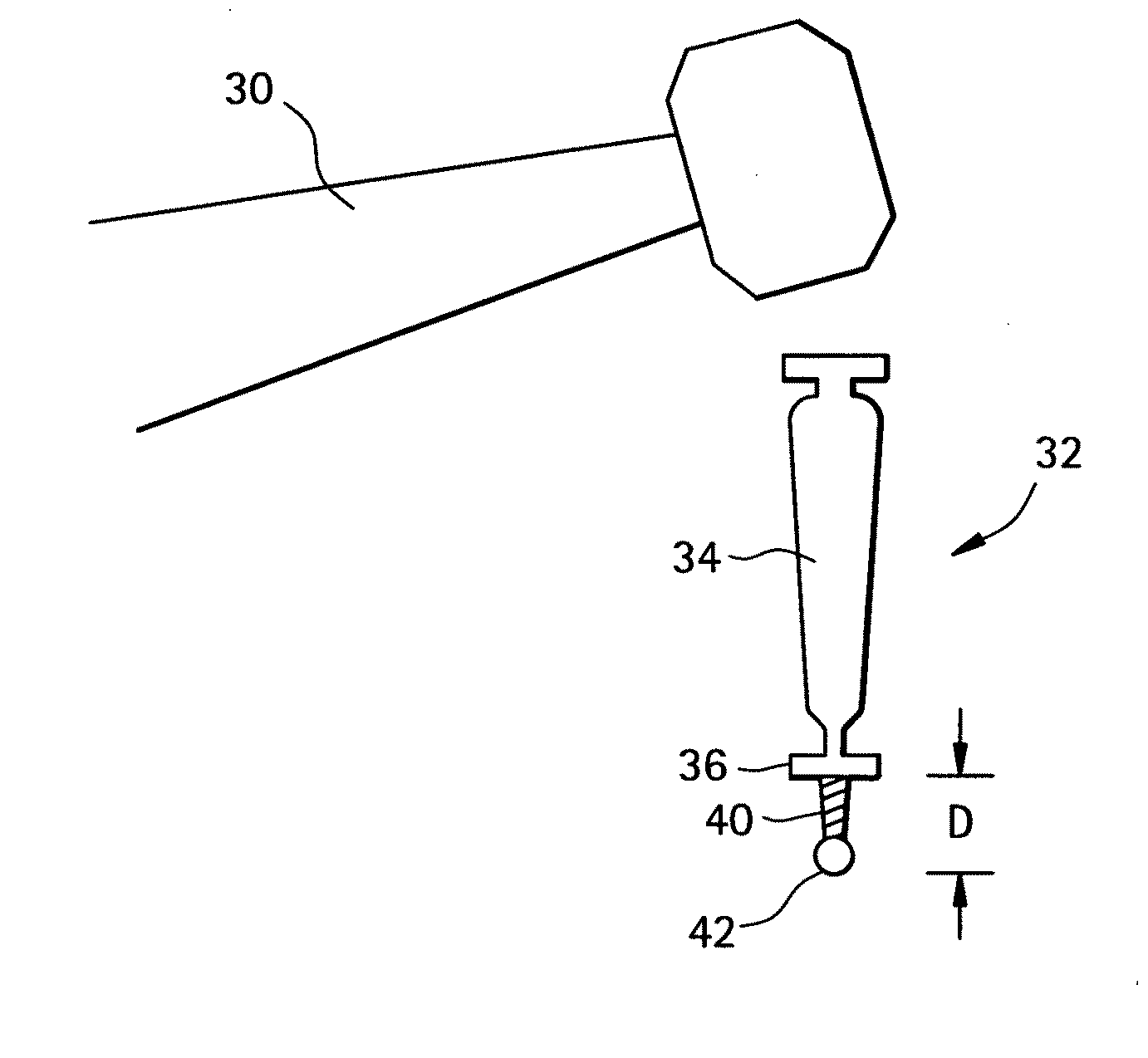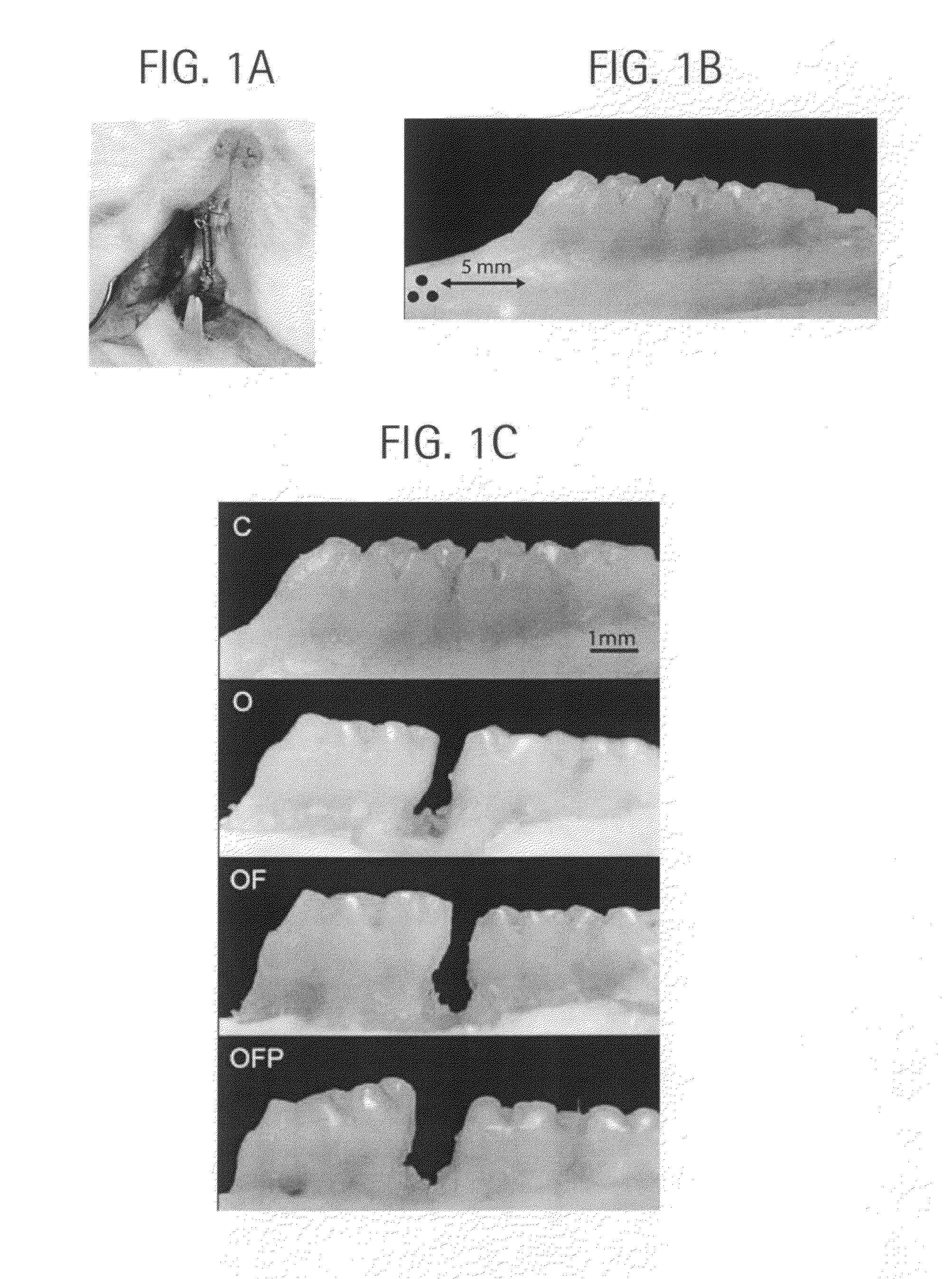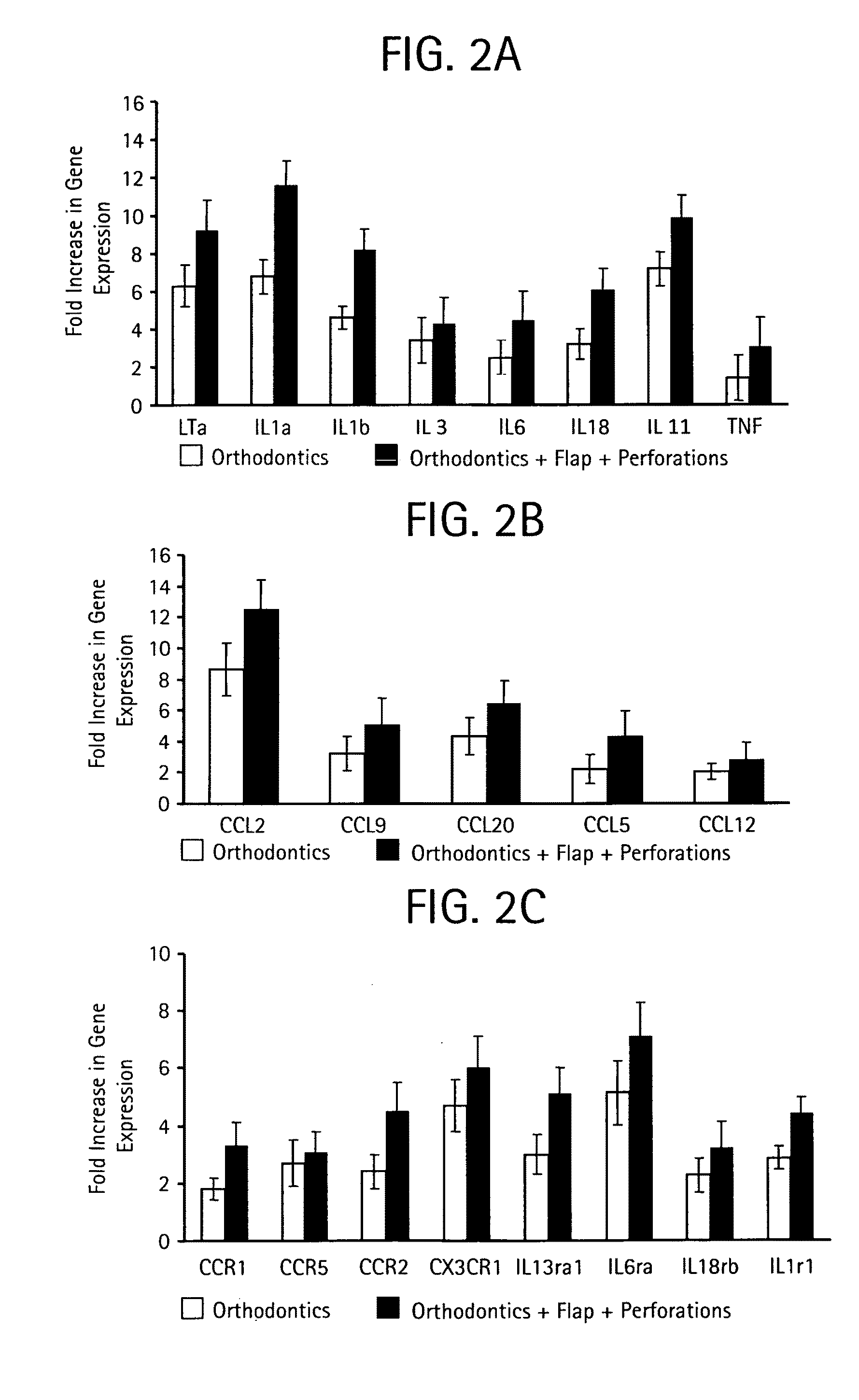Orthodontic methods and devices
a technology for orthodontics and devices, applied in the field of orthodontics, can solve the problems of complex treatment of these patients, the severity of malocclusion in many adults is beyond orthodontic treatment, and the cost of orthognatic surgery alone is high, so as to accelerate the bone remodeling process, increase the rate of tooth movement, and increase the expression of inflammatory cytokines.
- Summary
- Abstract
- Description
- Claims
- Application Information
AI Technical Summary
Benefits of technology
Problems solved by technology
Method used
Image
Examples
example 1
Materials and Methods
[0070]Forty-eight adult male Sprague-Dawley rats (average body weight of 400 g, 120 days of age) were housed and treated according to a protocol approved by the New York University Institutional Animal Care and Use Committee. Animals were divided into four groups (12 rats per group): control, which received coil spring without activation (C), orthodontic force applied to the spring (O), orthodontic force and soft tissue flap (OF), and orthodontic force, soft tissue flap, and shallow perforations of the buccal cortical plate (OFP). The health status and body weight of the rats were evaluated daily and no significant differences were observed between groups. From each group, 4 animals were used for gene expression studies, 4 for microCT and fluorescent studies and 4 for demineralized histological studies. Procedures were performed on one side of the maxilla, which allowed the contralateral side to be used as an additional control.
Surgical Procedure
[007...
example 2
Expected Result of this Study
[0082]We expect the flapless shallow perforations that we propose to make to be safe for orthodontic patients. We expect that increasing the local inflammatory response will enhance the rate of tooth movement with no deleterious side effects. We anticipate the elimination of highly invasive surgery as normally required for patients with skeletal moderate class II malocclusion.
Study Design
[0083]The subjects will be orthodontic patients with class II division I malocclusion. All subjects will have the upper 1st premolars extracted and placement of TAD mesial to upper 2nd premolar. This is a randomized, single blind, single-center, clinical trial. The randomization process used in this study is stratified randomization. Group A control patients will not receive any osteoperforations and Group B experimental patients will receive right side or left side osteoperforations. The subjects will be assigned in the order they visit the clinic, for example, using AB...
example 3
[0127]A 12 year old Caucasian male was referred for treatment of moderate upper and lower crowding and excessive overjet and overbite. He was near the finishing stage of his orthodontic treatment at the age of 14. His Pedodontist recommended extraction of the lower right first molar due to severe caries. The extraction of the lower right first molar produced a 12 mm excessive space between the lower right second premolar and the lower right second molar. Therefore, either preserving the space of the lower first molar for a future implant or protracting the lower second molar was required. There was a space of almost 12 mm to replace the lower first molar. Since the patient was near to finishing orthodontic treatment, protracting the lower second molar with traditional orthodontic treatment would lengthen the treatment for at least 12-16 months. On the other hand, preserving the space for future implant replacement required the patient to wear retainers for an additional 4 to 5 years...
PUM
 Login to View More
Login to View More Abstract
Description
Claims
Application Information
 Login to View More
Login to View More - R&D
- Intellectual Property
- Life Sciences
- Materials
- Tech Scout
- Unparalleled Data Quality
- Higher Quality Content
- 60% Fewer Hallucinations
Browse by: Latest US Patents, China's latest patents, Technical Efficacy Thesaurus, Application Domain, Technology Topic, Popular Technical Reports.
© 2025 PatSnap. All rights reserved.Legal|Privacy policy|Modern Slavery Act Transparency Statement|Sitemap|About US| Contact US: help@patsnap.com



